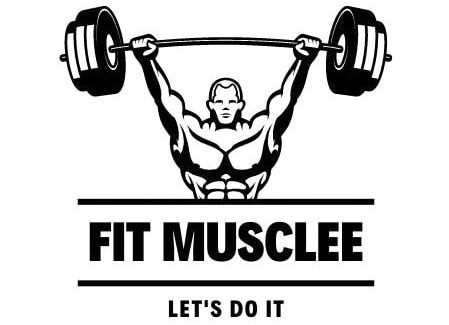Here is your complete guide to the bench press program.
Introduction to Bench Press Program
When it comes to building a strong, muscular upper body, few exercises rival the bench press. But raw effort alone won’t skyrocket your numbers—what you need is a bench press program.
In this comprehensive article, you’ll discover what a bench press program is, why it’s essential for muscle and strength gains, and how to structure a routine that delivers real results. You’ll uncover different program types for all experience levels, dissect the mechanics behind muscle growth, and explore bulletproof strategies to overcome plateaus and avoid injuries.
Here’s a quick rundown of what you’ll learn:
- The science and structure of a bench press program
- Program options for beginners, intermediate, and advanced lifters
- Tips to enhance performance and safety
- Sample week-by-week schedules for any goal
- Bench press program FAQs for all your burning questions
Embark on this journey and see why having a structured program is the smartest way to increase your strength reliably and safely, avoid injuries, and smash your goals.
The Science Behind a Bench Press Program
Understanding why a bench press works is key to long-term success.
Key Muscles Worked
- Pectoralis major (chest)
- Triceps brachii
- Anterior deltoids (front shoulders)
- Supporting: lats, upper back, forearms, core
Why Program Structure Matters
- Progressive overload: Systematic increase in weight, reps, or sets stimulates continuous gains.
- Periodization: Rotating between high and low intensity to prevent plateaus.
- Balance & Safety: Structured rest and accessory work prevent overuse and injury.
Physiological Benefits
- Muscle hypertrophy (growth)
- Increased bone density and metabolism
- Improved nervous system activation for power
Types of Bench Press Programs
Choosing the right program depends on your goals and experience level.
Comparison of Bench Press Program Types
| Program Type | Target Audience | Typical Duration | Main Focus |
|---|---|---|---|
| Beginner Bench Press Program | New lifters | 6-8 weeks | Form, adaptation |
| Intermediate Bench Press Program | Some experience | 6+ weeks | Strength, volume |
| Advanced Bench Press Program | Experienced lifters | 9-12 weeks | Max strength, peak |
| Powerlifting Bench Press Program | Competitive athletes | 8-12 weeks | 1RM focus, skill |
Beginner Bench Press Program
- Focus on technique and basic strength
- Lower volume, higher focus on form
- Progressive but simple weight increases
Intermediate Bench Press Program
- Higher volume and intensity
- Variable rep schemes (5×5, 3×8, etc.)
- Introduce accessory lifts and deloads
Advanced Bench Press Program
- Specialized cycles (peaking, deloading, cutting)
- Heavy use of periodization
- Incorporates sport-specific goals (e.g., powerlifting)
Key Components of an Effective Bench Press Program
To build a program that works, ensure each session contains these elements:
- Frequency: 2-4 bench days per week, based on experience
- Volume & Intensity: Adjust sets and reps for your goal (example: 4×5 for strength, 4×10 for size)
- Accessory Work: Target supporting muscles for stability and growth (ex: dips, rows)
- Rest Periods: 1-3 minutes between heavy sets; less between lighter, accessory movements
- Deload Weeks: Every 4-6 weeks, reduce intensity to facilitate recovery
- Progress Tracking: Log every workout to monitor improvement and spot sticking points
Example Weekly Bench Press Structure
| Day | Focus | Main Exercise | Sets x Reps | Intensity (%1RM) | Accessories |
|---|---|---|---|---|---|
| Monday | Heavy | Bench Press | 4×3–5 | 85–90% | Chest fly, triceps ext. |
| Wednesday | Medium | Bench Press | 4×6–8 | 70–80% | DB press, lat pulldown |
| Friday | Light | Bench Press | 4×8–12 | 60–70% | Row, shoulder work |
Sample Bench Press Programs and Workout Plans
Below are detailed templates tailored for every lifter.
Beginner Sample Bench Press Program (Linear Progression)
- Frequency: 2-3 times per week
- Simple progression, add 2.5–5 lbs per session
Beginner Linear Progression Plan
| Week | Sets x Reps | Weight Progression | Accessories |
|---|---|---|---|
| 1 | 3×8 | Start with empty bar | Push-ups, DB row |
| 2 | 3×8 | +5 lbs | Push-ups, triceps dips |
| 3 | 4×6 | +5 lbs | DB press, chest fly |
| 4 | 5×5 | +5 lbs | Band pec fly, ab work |
| … | Maintain & add | +2.5–5 lbs per week | Rotate accessories |
Tips for Beginners:
- Prioritize form over weight added
- Use a spotter or safety bars for heavy sets
- Record each session for progress accountability
Intermediate Bench Press Program (Daily Undulating Periodization)
- Rotates intensity & reps to break plateaus
- Add specialized accessory work
Intermediate Weekly Split (DUP Example)
| Day | Sets x Reps | %1RM | Focus | Accessories |
|---|---|---|---|---|
| Monday | 5×5 | 80% | Strength | Barbell row, triceps ext. |
| Wednesday | 4×8 | 70% | Hypertrophy | Incline DB press, pec fly |
| Friday | 6×3 | 85–90% | Max Power | Weighted dips, band pull |
| Optional | 3×10 | 60% | Technique | Core, rear delt raise |
The Intermediate Notes:
- Schedule a light week (deload) every 6–8 weeks
- Increase main lift weight by 2.5–5 lbs per cycle
The Advanced 9-Week Bench Press Program
- Highly structured with cycles for building & peaking power
Advanced 9-Week Periodization Example
| Week | Heavy Day | Medium Day | Light Day |
|---|---|---|---|
| 1 | 2×3–5 @ 70% | 2×6–8 @ 60% | 2×10–12 @ 50% |
| 2 | 3×3–5 @ 75% | 3×6–8 @ 65% | 3×10–12 @ 55% |
| 3 | 4×1–3 @ 80% | 4×4–6 @ 70% | 4×8–10 @ 60% |
| 4 | 5×1–3 @ 85% | 4×6–8 @ 70% | 4×8–10 @ 60% |
| 5 | 5×3–5 @ 90% | 3×5–8 @ 75% | 3×10 @ 60% |
| 6 | 6×1–2 @ 95% | 2×4 @ 75% | 2×8 @ 60% |
| 7 | 3×1 @ 100% | 2×6 @ 70% | 2×12 @ 55% |
| 8 | Test 1RM | 2×1–3 @ 80% | 2×1–3 @ 70% |
| 9 | Rest/Recovery | Light technique only | Stretch & core |
Advanced Tips:
- Prioritize peaking towards a test day or competition
- Include dedicated mobility and recovery work every week
Common Mistakes in Bench Press Programs & How to Avoid Them
Avoid these pitfalls to optimize your program results:
- Ignoring form for heavier weight: Bad habits can cause injuries or plateaus
- Lack of deload/rest weeks: Overtraining reduces gains
- Neglecting accessories: Weak supporting muscles stunt progress
- Stuck on one program: Adapt as you grow stronger
- Improper grip/bar path: Learn correct hand placement and bar trajectory
Benefits of Following a Bench Press Program
Sticking to a purpose-built bench press yields valuable benefits:
- Reliable, measurable gains in chest and triceps size
- Systematic tracking prevents plateaus
- Reduces injury risk with proper recovery and accessory work
- Encourages confidence in and outside the gym
- Develops mental focus through structured progress
Bench Press Program vs. Other Strength Programs
The table below provides a side-by-side comparison of a bench press against other popular strength training programs. This overview highlights focus, frequency, key features, and ideal users, helping you decide which fits your goals best.
Bench Press Program Highlights
- Specificity: Targets bench press strength with dedicated programming
- Progression: Frequent overload for breaking plateaus quicker
- Drawback: Limited lower body or total-body development unless combined with other routines
Other Strength Program Highlights
- Powerlifting Programs: Build strength across the big three lifts, equally distributing intensity
- Bodybuilding (Split) Programs: Focus on muscle hypertrophy with higher exercise variety
- Olympic Weightlifting: Prioritizes technique and power for full athletic development
Choosing the right program depends on your main goal: maximize bench, complete strength, or muscle mass.
FAQs About Bench Press Programs
How often should I follow a bench press program?
Most see best results at 2-3 bench press sessions per week, allowing enough recovery between workouts.
Read Also: Low Caffeine Pre Workout Supplement.
What’s the best bench press program for beginners?
A linear progression plan (see Table 3) with emphasis on form first, not weight.
Read Also: Bicep Workout Machine.
Can I gain muscle with a bench press program alone?
Yes, especially as a beginner. But supporting movements like row and dips accelerate muscle growth and balance.
Read Also: Cable Workouts for Abs.
How quickly can I improve my max (1RM)?
Most see a 5–10% increase in 8–12 weeks with consistent programming.
Read Also: Pumpkin Protein Cookies.
Are accessories required or is bench press enough?
Accessories are vital for maximum development, stability, and to prevent shoulder issues.
Read Also: Creatine Gummies vs Powder.
What are the most common mistakes in bench press training?
Skipping warm-up, ignoring weak points, prioritizing weight over form, and neglecting rest.
Read Also: Vegan Pre Workout.
Conclusion
Starting a program is one of the smartest moves for anyone seeking real fitness progress. Choose a routine that fits your experience, track every rep, and stick to the plan. Remember—
- Progress is built through consistency
- Structured bench press programs deliver the best results long-term
- Don’t skip rest, deload, or accessory work
Stay patient, keep logging your workouts, and make adjustments as you advance. Soon you’ll witness both strength and muscle gains that prove the power of a focused program!
Read Also: Protein Cupcakes.

